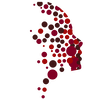Daily Before treatment
- Wash your neck thoroughly.
- DO NOT use lotions or creams on the skin of the neck.
- Be sure the neck is clean shaven.
- Alert your clinician to any small cuts or wounds you have on your neck.
After Treatment
- You may notice redness at the treatment site. This will fade over the next 1-2 hours.
- Apply aloe vera gel to the treatment area. Lotions can be applied following this step.
- Muscle spasms or cramping may be experienced following treatment. A warm compress or heating pad can be applied to the area until the cramp goes away. Although this is normal, alert your clinician if you notice this occurring.
- You may experience muscle soreness in your throat during the first weeks of treatment. This is a normal response to muscle strengthening and will fade as the treatment progresses. This is usually gone by week 3.
- You may experience a sense of swelling or tightness in your throat during the first weeks of treatment. This is also a normal response to muscle strengthening and will fade over time. This is usually gone by week 3 as well.
These are typical responses to treatment although there may be other affects you notice. It is important to bring these to the attention of the treating clinician. In many cases, this may be a normal effect although the clinician should be made aware of any changes in your status. Vital-Stim PDF instructions can be found here.

